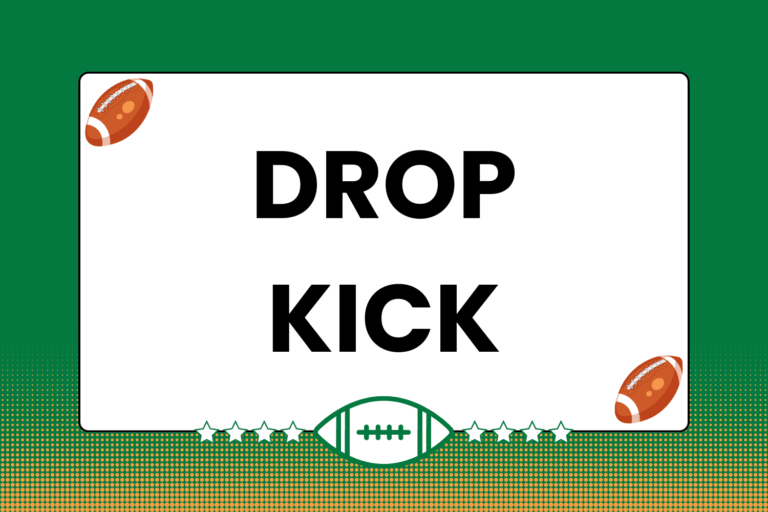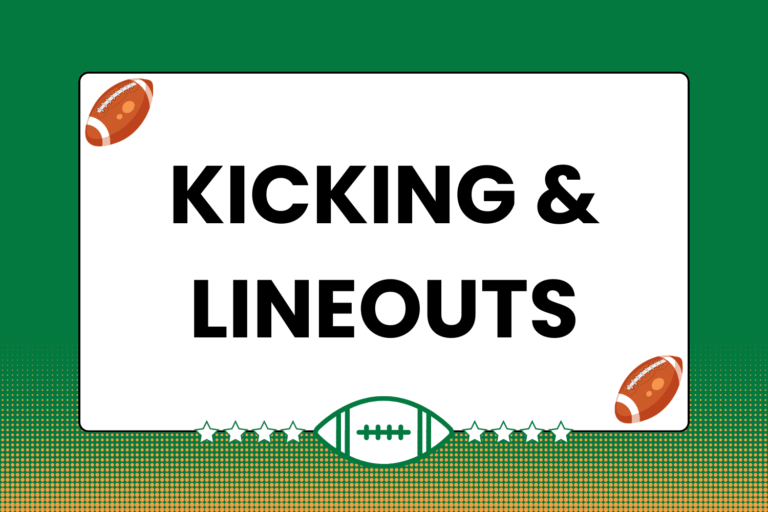At its most basic level, the objective in rugby is to have more points than the other team at the end of the match. True enough … but certain questions still remain: How are points scored? How many points is each way of scoring worth? What literally has to happen to be awarded points? All these questions, and hopefully many others, will be answered in this guide.
Depending on your familiarity with the game, there may be some terms in this guide that seem a bit confusing. For extra information/explanation about many of the parts of rugby covered here, it’s recommended that you also have a look at these guides/pages:
- The Mechanisms of Rugby: An overview of all the different elements of the game, with more technical information.
- The Scrum: An Overview and Understanding Kicking & Lineouts: A detailed explanation about what set plays are, what they do, and how they work.
- A Glossary of Rugby Terms: Not a guide, but a rugby dictionary where you can find the meaning to a collection of rugby specific words. At last count, there were approximately 150 terms defined.
The Try
A Try is the main way of scoring points in a rugby match. It’s officially awarded when the ball carrier grounds the ball in the other team’s in-goal zone. Five points are awarded to the team of the player that scores a try.
What You’ll See
The ball carrier runs towards the other team’s in-goal zone. One of two things usually happens next:
- If there are opposing players near/on the ball carrier, the ball carrier will dive toward the in-goal zone and “ground” the ball by touching it to the ground. Sometimes players dive in even if there are defending players nearby but not close enough to prevent a try from being scored.
- If the ball carrier has outrun all the opposing players, he/she will purposefully run to the middle of the other team’s in-goal zone. This is because the spot of the conversion kick (explained later) is decided by the spot that the ball is grounded in the in-goal zone. Grounding the ball in the middle means the conversion kick happens from straight on, rather than to one side or the other.
After the try is scored, play stops for the conversion kick, then is resumed with a kick-off.
The Conversion Goal
The Conversion Goal is worth two points and happens after one team scores a try. The conversion goal is basically a chance for the team that scored to get bonus points as a reward for scoring in the first place.
What You’ll See
One player from the team that scored the try will attempt to kick the ball through a set of uprights.
- The ball is placed at a spot 10 meters out from where the ball was grounded in the in-goal zone. In other words, the player who scored walks 10 meters from the try line (beginning of the in-goal zone), and that would be the closest spot where the conversion kick could take place.
- Opposing players must all line up behind their try line. They must stand still and refrain from trying to force a bad kick by making distracting noises or movements directed at the kicker.
- The kicker will attempt to kick the ball through the uprights. The ball will be stationary on the ground, usually propped up by a kicking tee.
- As soon as the kicker moves forward to start the kick, opposing players can rush forward and try to block the kick.
- If the kick goes through the uprights, the kicker’s team gets two more points. If not, no points are awarded. Either way, play stops until the ball is kicked off.
The Penalty Goal
A is very similar to a conversion goal. When one team commits a penalty, the referee will provide the other (non-offending) team with its options. One such option is to try for a penalty goal. In this case, play stops and a player from the non-offending team attempts to kick the ball through the uprights from the spot of the penalty.
What You’ll See
When a penalty is committed and the non-offending team chooses to try a penalty goal, a player from that team will indicate it, usually by telling the referee and/or by pointing at the ground near the spot of the penalty.
- All players on the penalized team must retreat at least 10 meters towards their goal line. A few players usually go all the way back to their own in-goal zone, in case the kick misses.
- The kicking player will place the ball on the tee and kick it, trying to get the ball through the uprights.
- If it’s successful, it’s worth three points and followed by a kick-off to resume play.
- It if misses and stays in play, normal play resumes.
- If it misses and goes out of bounds, the other team gets the chance to kick the ball away from their in-goal zone and into touch (out of bounds). To resume play, a line-out happens at the spot where the ball went into touch.
The Drop Goal
A Drop Goal is when a player drop kicks the ball during normal play and it goes through the uprights. Any player, at any spot on the pitch, can attempt a drop goal, as long as it’s attempted during normal play. It’s worth two points.
What You’ll See
The ball carrier will drop the ball immediately in front of his/her feet. Just as it hits the ground and starts to bounce, that player kicks it towards the opposing team’s uprights. What happens from there depends on how the ball flies:
- If it goes through the uprights, the kicker’s team gets two points and play stops, to be resumed by a kick-off.
- If it misses and stays in play, play continues as normal.
- If it misses and goes into touch, a line-out takes place where the ball went out. The non-kicking team throws the ball back into play.
Use What You’ve Learned
Hopefully you’ve expanded your technical knowledge of the game quite a bit, but keep in mind: The best way to retain this new knowledge and build on it is to apply it by watching rugby. The more rugby you watch, the more you will be able to understand the game. When you think about it, this is a win-win situation. You learn about the game and watch rugby at the same time!






